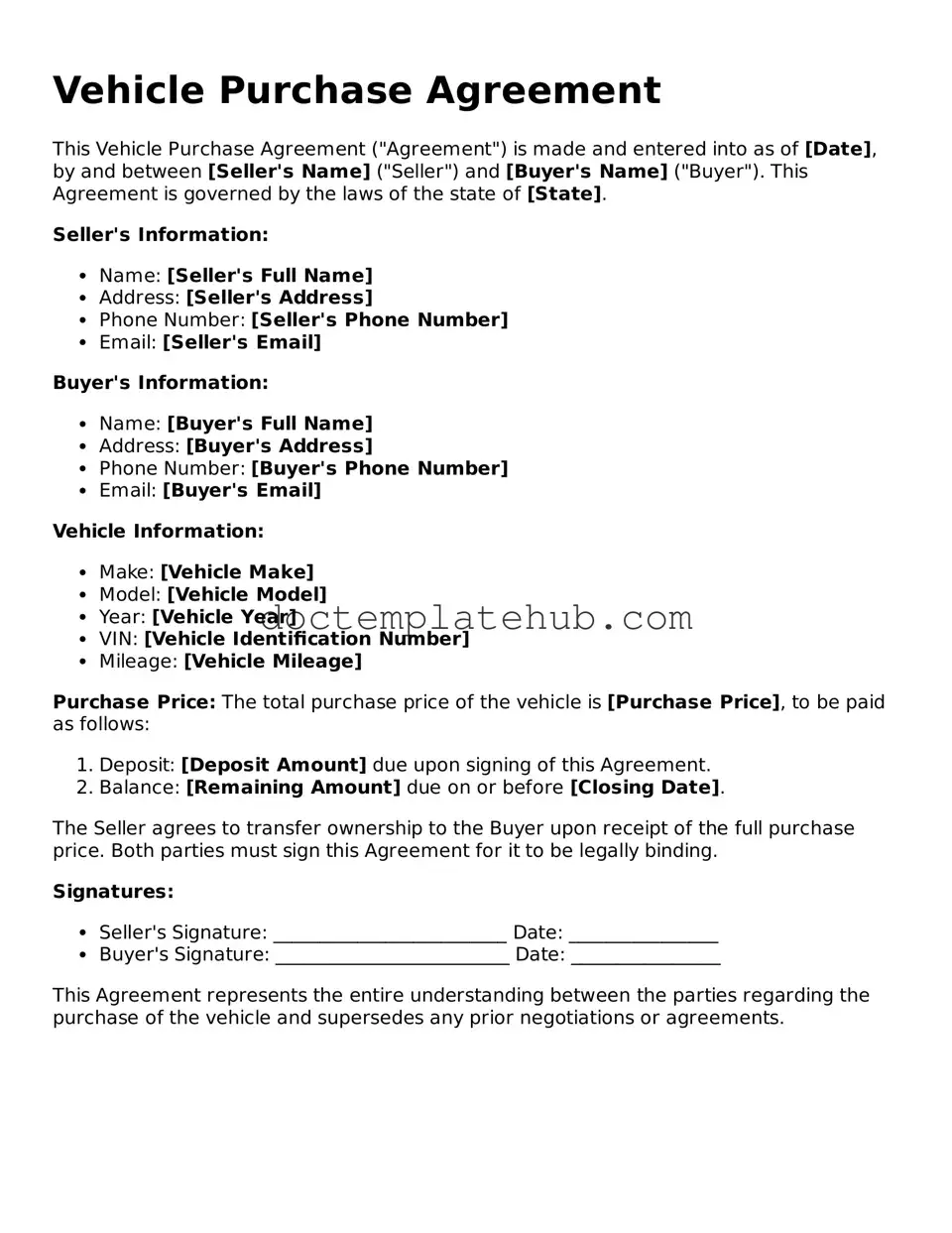What is a Vehicle Purchase Agreement?
A Vehicle Purchase Agreement is a legally binding document that outlines the terms and conditions of the sale of a vehicle between a buyer and a seller. It details the specifics of the transaction, including the vehicle's make, model, year, VIN (Vehicle Identification Number), purchase price, and any warranties or guarantees provided by the seller.
Why is a Vehicle Purchase Agreement important?
This agreement protects both parties involved in the transaction. For the buyer, it ensures that they receive the vehicle as described and that their rights are safeguarded. For the seller, it provides a record of the sale and protects against potential disputes. Having a written agreement helps clarify expectations and responsibilities.
What information should be included in the Vehicle Purchase Agreement?
The Vehicle Purchase Agreement should include the following details: the names and contact information of both the buyer and seller, vehicle details (make, model, year, VIN), purchase price, payment method, any trade-in information, and the date of sale. It may also include terms regarding warranties, inspection rights, and any additional agreements between the parties.
Can the Vehicle Purchase Agreement be modified after signing?
Yes, the Vehicle Purchase Agreement can be modified, but both parties must agree to any changes. It is advisable to document any amendments in writing and have both parties sign the revised agreement to maintain clarity and prevent misunderstandings.
What happens if either party breaches the Vehicle Purchase Agreement?
If either party fails to fulfill their obligations as outlined in the agreement, it may be considered a breach. The non-breaching party may seek remedies, which could include legal action, seeking damages, or specific performance (forcing the breaching party to comply with the terms). The agreement may also specify procedures for resolving disputes.
Is a Vehicle Purchase Agreement required by law?
While a Vehicle Purchase Agreement is not always legally required, it is highly recommended for clarity and protection. Many states do not mandate a written contract for private vehicle sales, but having one can help avoid potential disputes and provide legal recourse if necessary.
How should the Vehicle Purchase Agreement be signed?
Both the buyer and seller should sign the Vehicle Purchase Agreement to indicate their acceptance of the terms. It is best practice for both parties to retain a copy of the signed agreement for their records. Electronic signatures may also be acceptable, depending on state laws.
Where can I obtain a Vehicle Purchase Agreement template?
Vehicle Purchase Agreement templates are widely available online. Many legal websites and automotive resources provide customizable templates that can be tailored to specific transactions. It is essential to ensure that any template used complies with local laws and regulations.
